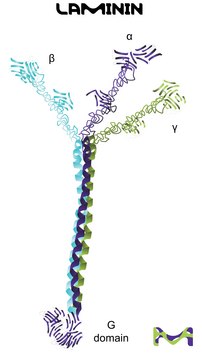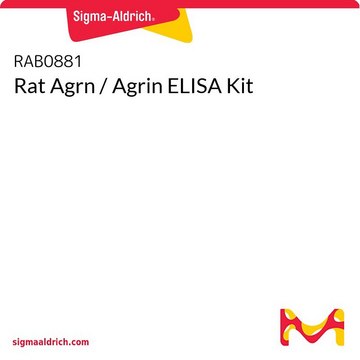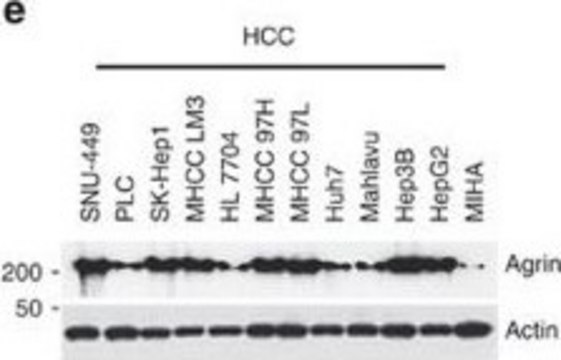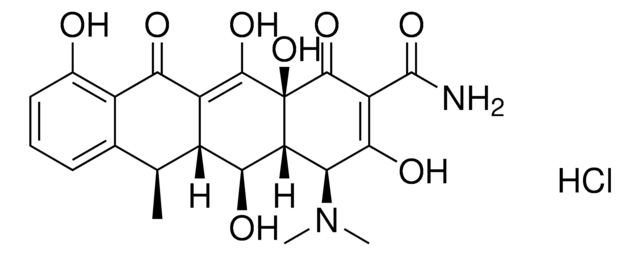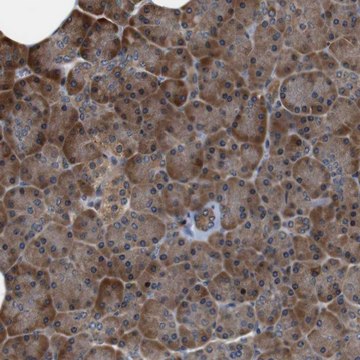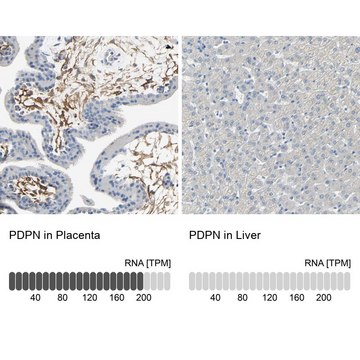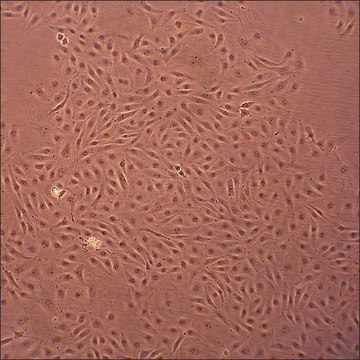推荐产品
重组
expressed in HEK 293 cells
方案
≥95% (SDS-PAGE)
表单
lyophilized powder
效能
attachment assay, measured by the ability of the immobilized agrin to support the adhesion of PC12 cells
技术
cell culture | mammalian: suitable
适用性
endotoxin tested
运输
ambient
储存温度
−20°C
一般描述
Agrin C-terminal human recombinant is expressed in human HEK 293 cells as a glycoprotein with a calculated molecular mass of 87 kDa (amino acids Ala1260-Pro2045, with an N-terminal His tag). The DTT-reduced protein migrates as a ∼100 kDa polypeptide on SDS-PAGE due to glycosylation. This protein is manufactured in human cells, with no serum. The human cells expression system allows human-like glycosylation and folding, and often supports higher bioactivity of the protein.
生化/生理作用
Agrin is a large extracellular heparan sulfate proteoglycan that is involved in the formation of the neuromuscular junction.
Agrin triggers the aggregation of acetylcholine receptors via the muscle-specific kinase (MuSK) and the low-density lipoprotein receptor-related protein 4 (Lrp4) receptor complex.
Agrin is required for the full regenerative capacity of neonatal mouse hearts.
Recombinant agrin has been shown in vitro to promote cardiomyocyte proliferation, as studied in mouse-induced and human-induced pluripotent stem cells. Recombinant agrin has been shown in vivo to promote cardiac regeneration, after induction of myocardial infarction in adult mice.
Agrin triggers the aggregation of acetylcholine receptors via the muscle-specific kinase (MuSK) and the low-density lipoprotein receptor-related protein 4 (Lrp4) receptor complex.
Agrin is required for the full regenerative capacity of neonatal mouse hearts.
Recombinant agrin has been shown in vitro to promote cardiomyocyte proliferation, as studied in mouse-induced and human-induced pluripotent stem cells. Recombinant agrin has been shown in vivo to promote cardiac regeneration, after induction of myocardial infarction in adult mice.
储存分类代码
11 - Combustible Solids
WGK
WGK 2
法规信息
常规特殊物品
历史批次信息供参考:
分析证书(COA)
Lot/Batch Number
Xiu-Qing Fu et al.
Cell discovery, 6, 9-9 (2020-03-07)
During the development of mammalian neuromuscular junction (NMJ), the original supernumerary axon inputs are gradually eliminated, finally leaving each muscle fiber innervated by a single axon terminal. However, the molecular cues that mediate the elimination of redundant axon inputs remain
我们的科学家团队拥有各种研究领域经验,包括生命科学、材料科学、化学合成、色谱、分析及许多其他领域.
联系技术服务部门